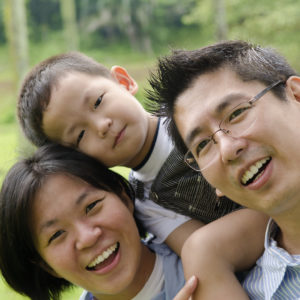Anti-Asian prejudice in the U.S. is an old story with a modern twist. Japanese were placed in internment camps after Japan bombed Pearl Harbor in December 1941. Franklin D. Roosevelt, the American president through the war, viewed them as a security threat. Chinese immigration was banned for a time after thousands came from China in the late 19th century to work on building railroads.
In its reincarnation, Asian Americans of widely differing national and racial backgrounds are vilified and sometimes attacked. Violence has increased since the outbreak of what Donald Trump as president called “the China virus.” Almost every day you hear of someone punched or knocked down. More often, Asian Americans are jeered or threatened, verbally if not physically.
“Bigotry and brutality targeting Asian Americans has spiked over the past year as racist rhetoric linked to the coronavirus has soared,” says the Daily News, “New York’s hometown newspaper.” Since March “shunning, spitting and violent physical assault were among the 3,795 incidents reported by victims nationwide,” the article goes on, citing figures compiled by “Stop Asian-American Pacific Islander Hate”
Show business names as diverse as the Korean-American comedian Margaret Cho and Chinese American playwright David Henry Hwang talked about experiences ranging from physical attacks to snubs to name-calling. “It’s really more about being very invisible within Hollywood, within the media,” Cho is quoted as saying. ‘It’s very weird when you’re just excluded from the conversation.” Hwang, who was stabbed in the neck a few years ago in Brooklyn, observed that “Asians have always been stereotyped as perpetual foreigners.”
As an American descended from Europeans and educated in the U.S., I have to say these attacks come as a shock. I’m well aware of deep-seated prejudices against Black and Hispanic Americans but was unaware of resentment against those of Asian backgrounds until they surfaced during the global pandemic.
In my home town of Edison, New Jersey, about 30 miles from New York on the main interstate road and rail routes to Philadelphia and Washington, as a kid I rarely saw anyone of Asian origin other than in one or two Chinese restaurants. On a recent visit, I saw Korean Hangul writing on shops and churches. A Korean American has served as mayor.
Korean Americans tell me they experience ill-will in subtle ways, in personal relationships, in comments and looks, in competition in jobs, on campuses, in business. These responses are part of the everyday existence of Asian Americans.
In fact, prejudices against newcomers, whether from different countries or ethnic groups, is to be expected. Immigrants from Ireland and Italy, from Poland and Germany, faced discrimination as they poured into the U.S. in the late 19th and early 20th centuries. Jewish immigrants endured anti-Semitic attacks while achieving stunning success in just about every field from finance to show business to the arts and the media.
Black Americans, having come from Africa as slaves, suffered terrible discrimination though nominally freed from forced servitude during the Civil War in 1862 by Abraham Lincoln’s Emancipation Proclamation. The slogan Black Lives Matter is a reminder that Black Americans typically suffer greater poverty, joblessness, and disease than other groupings.
Americans often forget that the continent’s original settlers were not from Europe or Asia or Africa. Rather, they were here long before being driven from their ancestral lands in wars that raged for nearly three centuries before they were totally dispossessed, defeated, and confined to reservations.
These original Americans were called “Indians” because Christopher Columbus, who first encountered them, believed he had discovered a new route to India rather than a huge unknown continent. Now, with more than three million people from India living in the U.S., we refer to these indigenous people as Native Americans. Thousands of place names, including those of more than half the 50 American states, are reminders of those who roamed the land long before these newcomers conquered them with new weapons, bringing diseases to which they had no immunity.
The United States historically has been a melting pot. A test of the strength of the U.S. is the ability to assimilate widely varied groupings into “America as a civilization,” as the political scientist Max Lerner described integrating one group after another into the fabric of American society.
The Latin words, “E Pluribus Unum” — “from many, one” — are inscribed on the great seal of the United States. The message is that American life is made stronger, richer, better as diverse groupings exist with one another while remaining proud of their individual ethnic and religious origins.

